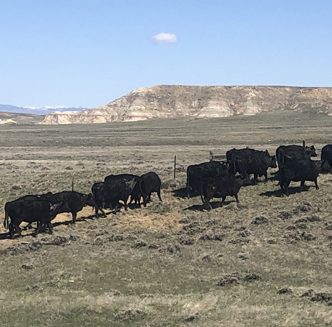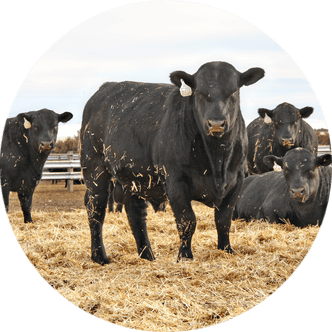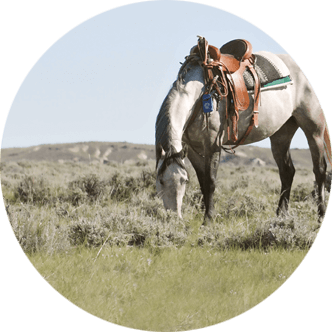Predator data: Wildlife Services publishes 29th year of wildlife damage management data
On April 11, the U.S. Department of Agriculture Animal and Plant Health Inspection Service’s (APHIS) Wildlife Services (WS) published its 29th annual Program Data Reports (PDR) for Fiscal Year (FY) 2024.
The reports outline all of WS’s wildlife management data activities, including conservation efforts, information-sharing projects, research sampling and other lethal and nonlethal management activities.
“Wildlife are one of America’s most valued public resources, yet they can also have negative impacts on agriculture, human health and safety, property and natural resources,” states APHIS is an April 11 press release.
In response, over the course of FY24, WS dealt with nearly 20.5 million animals which caused or threatened to cause damage. During these efforts, the agency dispersed 18.5 million unharmed animals from both urban and rural settings.
Lethal and nonlethal control
Nonlethal control methods are WS’s ideal form of wildlife management, and in FY24, these included – but were not limited to – fladry; electric fencing; livestock protection dogs; range riding and harassment, exclusion and/or modifying habitats to reduce attractants.
WS also installed multiple flow devices in areas with high beaver activity to control water levels and reduce the impacts of flooding, and they trapped and relocated species of concern, such as grizzly bears and raptors.
According to the news brief, WS has also been working on creating and evaluating new nonlethal methods, such as new scare devices and repellents; testing existing compounds for repellent properties and using drones to deter predators from livestock and birds from the flight path of planes near airports.
While nonlethal control is ideal, APHIS admits these activities do not resolve all wildlife-related conflict. In fact, the agency notes it lethally removed 9.4 percent, or approximately 1.93 million, wildlife from areas where damage was occurring.
“When lethal control is necessary, WS donates as much animal meat as possible. In FY24, WS donated 159 tons of deer, goose and other meat – more than one million servings of protein for people in need – and over 34 tons of meat for animal consumption to animal rehab centers, zoos and other facilities, making full use of this resource from wildlife damage management work,” APHIS shares.
WS wildlife management activities are funded through a combination of Congressional appropriations and cooperator donations.
In FY24, WS received roughly $130.8 million in appropriated funds – 50.6 percent of the total budget – for management operations in every state and territory, to conduct research and to support special programs such as managing feral swine and rabid raccoons.
Funding obtained from program cooperators, including federal and state agencies, counties, livestock producers and other ag organizations, totaled $127,527,554 in FY24, allowing WS to maximize the scope and effectiveness of these projects.
Overall, APHIS notes the majority of its budget – 35.6 percent – was spent on reducing or preventing wildlife hazards to human health and safety, such as wildlife and aircraft collision and disease transmission mitigation, while another 31.5 percent was spent on agricultural protection efforts, including the protection of livestock, row crops, aquaculture and timber.
An additional 16.9 percent was dedicated to protecting natural resources, including threatened and endangered species, and 16 percent was used to protect private property.
PDR highlights
The FY24 PDRs released on April 11 detail all of the work WS carried out over the course of the year.
Some PDRs of note include PDR B, which emphasizes more than 325 threatened or endangered wildlife and plant species were protected from the impacts of predators, invasive species and disease; PDR D shares WS reached over 227,000 participants in more than 72,000 information-sharing projects and PDR E highlights WS’s work to reduce aviation strikes at 807 airports, with more than 8,115 personnel trained on airport wildlife hazard identification and management.
In PDR F, the agency notes wildlife disease biologists collected 80,000 samples to test for 31 different diseases as part of the National Wildlife Disease Program.
This number represents an eight percent increase in sampling from FY23 and a 38 percent increase since FY22, largely due to the increase in highly pathogenic avian influenza (HPAI) cases.
The report notes 37 percent, or 29,771, of disease samples taken were for HPAI, while another 12.9 percent of samples were collected for the National Rabies Management Program; 4,758 samples were collected for SARS-CoV-2 and an unreported amount of samples from feral swine were collected to test for 13 specified diseases, conditions and/or genetics.
PDR G provides information on the number of animals dispersed, killed, euthanized or freed during WS’s FY24 management operations.
Highlights include the lethal removal of 1,305,812 birds of various species listed on the U.S. Fish and Wildlife Service Depredation Order, which compromises 67.7 percent of all animals lethally removed by the agency in FY24.
WS also used nonlethal methods to disperse 11.3 million starlings, blackbirds, cowbirds, crows, grackles and magpies from areas where they were causing damage.
“Due to their nationwide abundance, coyotes are the most common predator of livestock, killing more than 300,000 head of cattle and calves, sheep and lambs and goats and kids annually, according to National Agricultural Statistics Service surveys of livestock producers,” reads PDR G.
The report goes on to mention WS worked with livestock producers throughout the past year to reduce coyote predation using a number of different methods, and they were successful in removing 57,999 coyotes and 263 dens nationwide.
PDR G also highlights invasive species accounted for 79.7 percent of all lethally-removed wildlife by WS in FY24, including 127,429 feral swine as part of the National Feral Swine Damage Management Program.
In contrast, native species accounted for 20.3 percent of all animals lethally removed by WS.
The agency also treated 9,537 acres of land in both rural and suburban areas with products registered through the Environmental Protection Agency to protect resources and property.
According to the report, WS applied zinc phosphate on 4,577 acres of oats and wheat to protect from various species of burrowing rodents, as well as Delta Dust insecticide on 4,960 acres of land to reduce plague-vector fleas in prairie dog tunnels to protect the black-footed ferret, which has been listed as endangered since 1967.
“Most species whose damage WS actively manages are abundant or have increasing populations and/or expanding ranges,” the report concludes. “WS balances its focused efforts to resolve wildlife conflicts with stewardship responsibilities toward the long-term maintenance and health of wildlife populations.”
Hannah Bugas is the managing editor of the Wyoming livestock Roundup. Send comments on this article to roundup@wylr.net.





